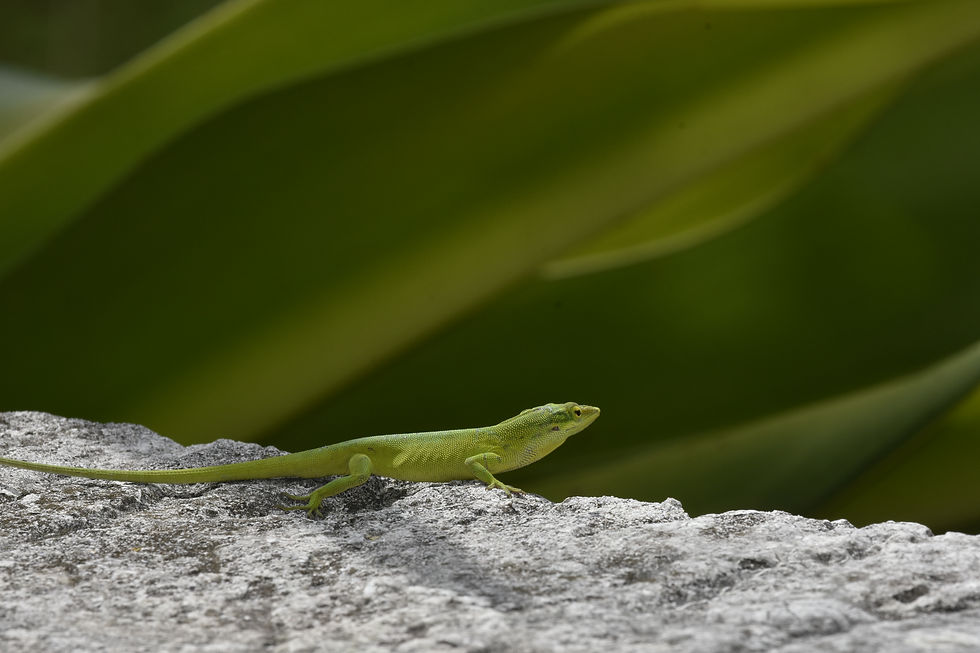

REPTILES

Bahama Brown Anole
Reptiles are the most conspicuous group of terrestrial animals in The Bahamas next to birds. This group contains more species than any other terrestrial vertebrate on earth, with 12,502 species currently recorded. In The Bahamas, our native and endemic reptile fauna represent 12 families and 74 endemic species and sub-species. The families of native reptiles include:
-
Boidae
-
Tropidophidae
-
Dipsadidae
-
Typhlopidae
-
Leptotyphlopidae
-
Teiidae
7. Phyllodactylidae
8. Emydidae
9. Iguanidae
10. Leiocephalidae
11. Sphaerodactylidae
12. Dactyloidae
Reptiles are found in every habitat in The Bahamas. Some species, like the Bahama Brown Anole (Norops [Anolis] sagrei ordinatus) have nationwide distribution, whereas other species are only found on islands of a particular bank system for example the Abaco Boa (Chilabothrus exsul).
The islands of the Great Bahama Bank are where the highest reptile taxa diversity is found (at least 23 taxa) however, Great Inagua which is on its own bank in the southern Bahamas, holds the record for the highest single Island endemism. This means the island boasts the highest number of endemic reptile species that can be found on any one island in the entire archipelago, with 11 unique taxa to date.

Cuban Whiptail
Some of our endemic reptile species include:
-
Bahama Anole (Anolis oligaspis)
-
Cay Sal Bank Anole (Anolis fairchildi)
-
Inagua Gecko (Aristelliger barbouri)
-
Bahama Boa (Chilabothrus strigilatus)
-
Bahamian Racer (Cubophis vudii )
Click here to view the full list of endemic reptile species.
Reptiles play several important roles in Bahamian ecosystems. They are seed dispersers, apex predators, pollinators, and a natural form of pest control particularly for insects and invasive rodents. Additionally, they are in turn, food sources for many animals. Economically, reptiles contribute tens of millions of dollars annually to the economy via eco-tourism.

Bahama Boa





